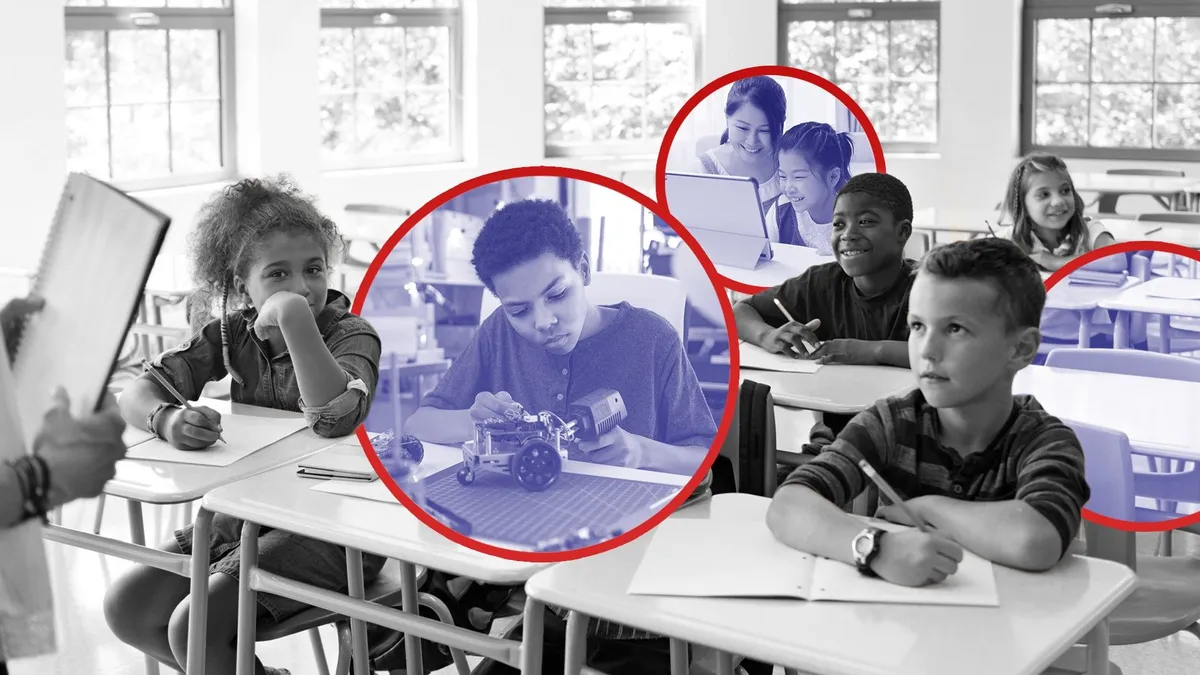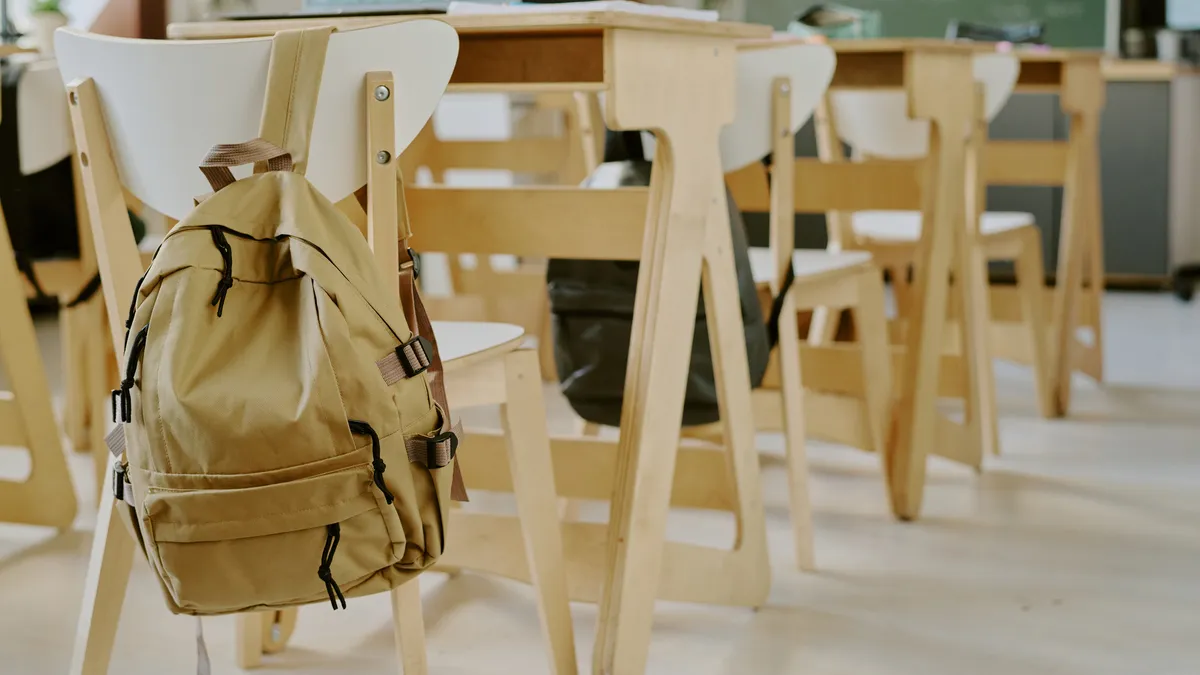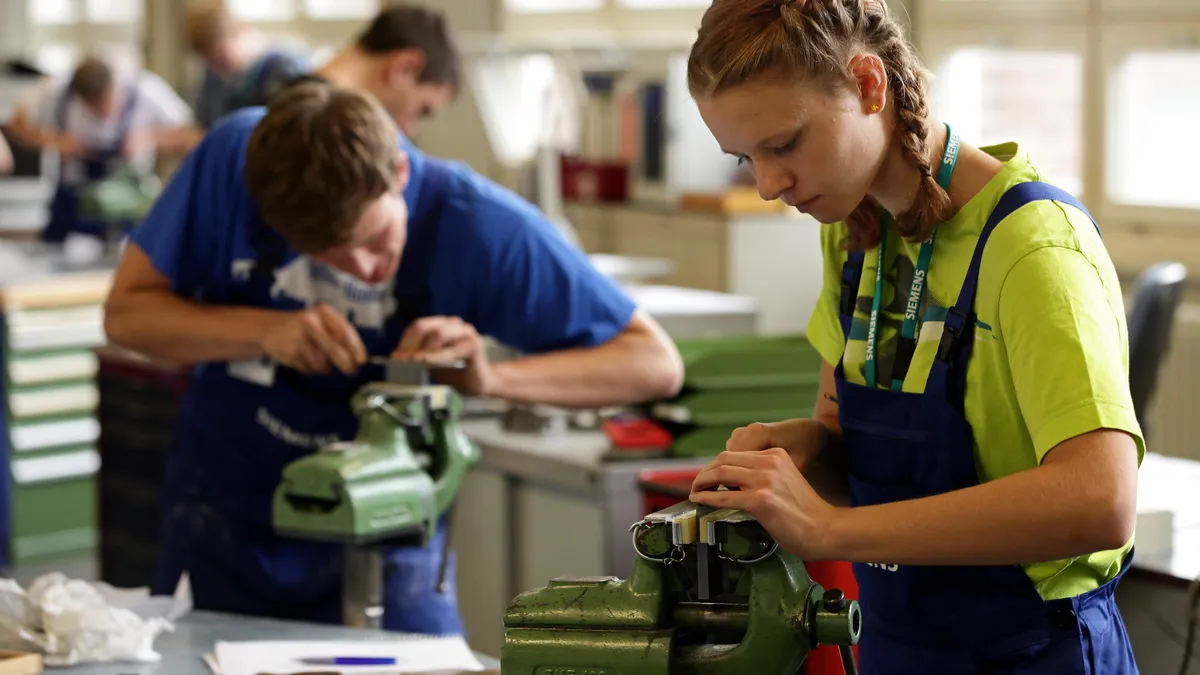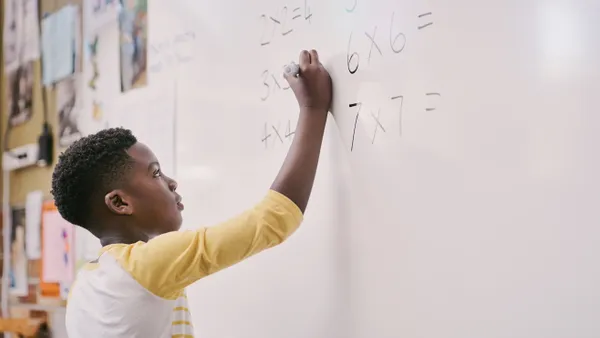Editor's note: This is an installment of Fast Forward, a recurring column focused on long-term cultural and technological shifts impacting public education. This edition focuses on the benefits and staying power of project-based learning approaches.
When schools shuttered nationwide in the spring, districts were hard pressed to turn much of the education system on its head. Included was the need to reimagine curriculum and instruction into a virtual setting seemingly overnight.
During the months of remote learning that followed, many teachers switched to project-based learning, encouraging students to get creative with the tools and sources of information around them. Many also shifted to a feedback-based assessment system to measure students' progress.
And although in-person instruction is set to resume in varying degrees in many places, some administrators expect project-based learning assessed through teacher feedback to be more common this school year. Some even believe it could take the place of traditional assignments and numeric grading scales in the coming years.
Growing calls for a new curriculum
“By default, [the pandemic] is going to have an impact on how we do things going forward,” said Nick Polyack, superintendent of Leyden High School District 212 in Illinois. “People are going to have new skill sets and new expectations for what teaching and learning would look like.”
Like many other administrators, Polyack doesn’t intend to begin the school year with tests and quizzes, which he said “seems to be a waste of time."
“I would much rather prefer that our grading be based on really strong feedback for kids,” he said, “as opposed to, ‘You have earned enough points to earn something called a B.’”
Just about two months into closures, Linda Darling-Hammond, Stanford University scholar and California State Board of Education president, noted performance-based assessment could “sharpen critical thinking and communication skills” and better prepare students for the agency and strategic learning skills needed to succeed in college.
Darling-Hammond, also president and CEO of the Learning Policy Institute, observed at the time that schools that successfully motivate students to engage in learning even when school is disrupted are "connecting lessons to real world applications, allowing students to explore the world around them.“
Now, Evan Gutierrez, managing director for curriculum and assessment at Summit Learning, a research-based nonprofit that works with schools to offer customized curriculum, told Education Dive he has noticed “a [broad] coalition across communities that are demanding action” to change the formal curriculum to one that is reflective of their experiences in the outside world.
“[Schools, communities and parents] want to take the issues that students are concerned about and worried about, and social issues we’re seeing in the news feed, into the classroom for conversation,” Gutierrez said.
Giving permission to take risks
Until now, Polyak said, while many districts had adopted project-based learning, it always seemed "secondary to, 'What grades are our students gonna get?'"
Although his district is an all-high-school district, Polyack said his students won’t be taking final exams and teachers will be told to focus on the quality of time they have with their students rather than the quantity of content they cover.
Implemented long term, the shift to hands-on project-based learning led to higher engagement for Purdue Polytechnic High School in Indianapolis.
But among concerns with the approach is the possibility of teacher burnout, considering a prolonged teaching and learning cycle while schools are remote or implementing hybrid learning. Providing feedback could take roughly eight hours, Taren Villecco, 5th grade at Ryan Elementary School in Boulder Valley School District in Colorado, told Education Dive in April.
And it's important that the projects assigned to students fit into standards while also reflecting student interests. But this can be a challenge, said Scott Bess, head of school for Purdue Polytechnic, since students can "sniff out in a heartbeat when you’re just trying to check off standards." And if the projects don't fit into standards, leaders will have to choose what to prioritize, because, in Bess' experience, cramming both with equal rigor can burn out both students and staff.
While his teachers are assigning projects through manual intervention, or coming up with their own passion projects for their students, Bess' goal is to automate the process so that it's eventually an easier lift for his teachers.
According to a review of 30 districts’ 2020-21 reopening plans by the Center for Reinventing Public Education, over half specified that students in remote learning will receive feedback on assignments. But for the shift from grade-based to feedback-based learning to be long term, Polyack said, leaders must give teachers permission to flip their priorities.
And the change toward a more equitable system of measuring progress shouldn’t fall on the “wokeness” of any individual teacher, as it has until now, Gutierrez said, but should rather become formalized and programmed at the district level to be sustainable and have a lasting impact.
The districts he has seen do this successfully design their curricula based on their individual communities’ unique experiences.
Considering the future of the U.S. student population is projected to be majority students of color, according to predictions from the National Center for Education Statistics, this need “is urgent and long lasting.”
“What we shouldn’t let slip is this moment where there’s this clear call from multiple seats around the table for there to be a concrete change,” Gutierrez said, saying administrators as well as parents and community leaders are now among those calling for change. “The next thing to happen is for those communities to have conversations about what it takes to make this concrete, so that learning next week is different than it was last week.”
Correction: A previous version of this story misstated U.S. public school population projections. The language has been clarified to reflect projections are majority students of color.























